
It has been almost a month since our lives were turned upside down when Hurricane Ian came ashore on our barrier islands. The damage done on FMB is almost impossible to comprehend. Landmarks and homes that dotted our island for years are no longer standing. Driving down Estero Blvd, it is difficult to determine where you are without these familiar homes and other landmarks that gave us a feeling of stability.
Over the past month, there has been much anguish, anger, and acceptance as residents begin the difficult task of starting over. At times it seems impossible. Many questions are being asked: How will we rebuild? What will the island look like post Ian? Will we lose our funky beach feel? Will the developers swope down and buy up all the damaged buildings changing the face of the beach forever?
I am sure these same questions have been asked before as our island has seen its share of hurricanes for over 100 years. This is the first in a series of blog posts discussing the other storms that have wreaked havoc on our island. No matter how bad the storm turned out to be, the Beach residents faced the destruction head on and rebuilt. I feel confident that this will be the case again because Beach people are resilient, and the love they have for the island will withstand any category 4 or 5 storm. Let’s begin by going back 101 years to October 1921, when a no name storm hit Tampa causing damage up and down the west coast.
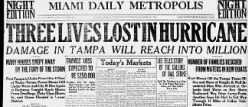
Imagine what life was like for the 62 residents who lived on what was then called Crescent Beach in 1921. Prior to that year, the island was accessible only by boat. The one place to stay once you arrived on the island was the Winkler Hotel at the end of Pompano Street. However, once the bridge was built in 1921, the Real Estate Boom began on Crescent Beach. In fact, things were going so well that the Fort Myers Press stated in a headline, “Crescent Beach Center of Most Intense Development in Florida Today.”
After the bridge was opened, it was not uncommon for 200 cars to cross in a single day bringing 1,000s of visitors to the island where they would drive on the beach, enjoy the casinos, and bath in the warm gulf waters. Unfortunately, the boom was interrupted when a low pressure system was observed in the western Caribbean on October 17, 1921. Five days later, a Category one hurricane had formed with winds of 81 mph. By October 25, the storm had intensified into a Cat 4 with winds up to 140 mph.
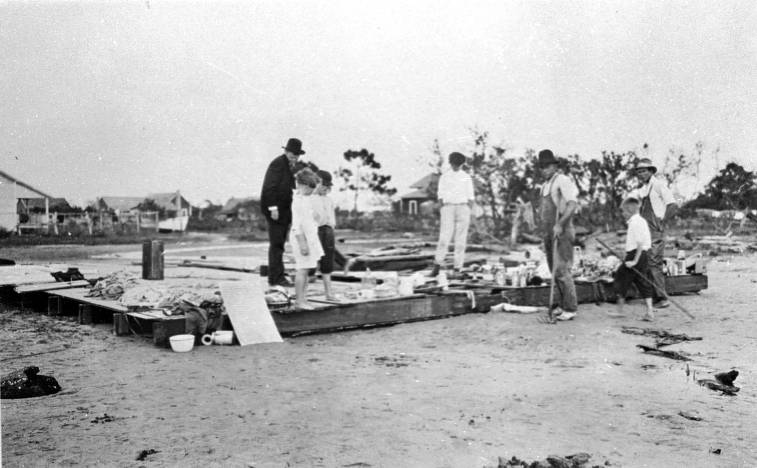
Although the storm came ashore a little north of Tarpon Springs, the damage done to Fort Myers Beach was great. A storm surge of over 10 feet swept over the island demolishing docks and piers, sinking ships, and flooding homes and businesses. Damages to homes, buildings, bridges, and docks totaled more than 3 million dollars (1921 dollars). In 1921, the Sanibel Island which is now famous for its pristine beaches and seashells was best known for its fruit and vegetable crops. Sanibel grapefruits were being sold all over the country. Tomatoes grew so well in the calcified soils they fetched $1.50 a piece in New York City. The Gulf overtook the land, drowning the fruit and vegetable farms which never recovered.
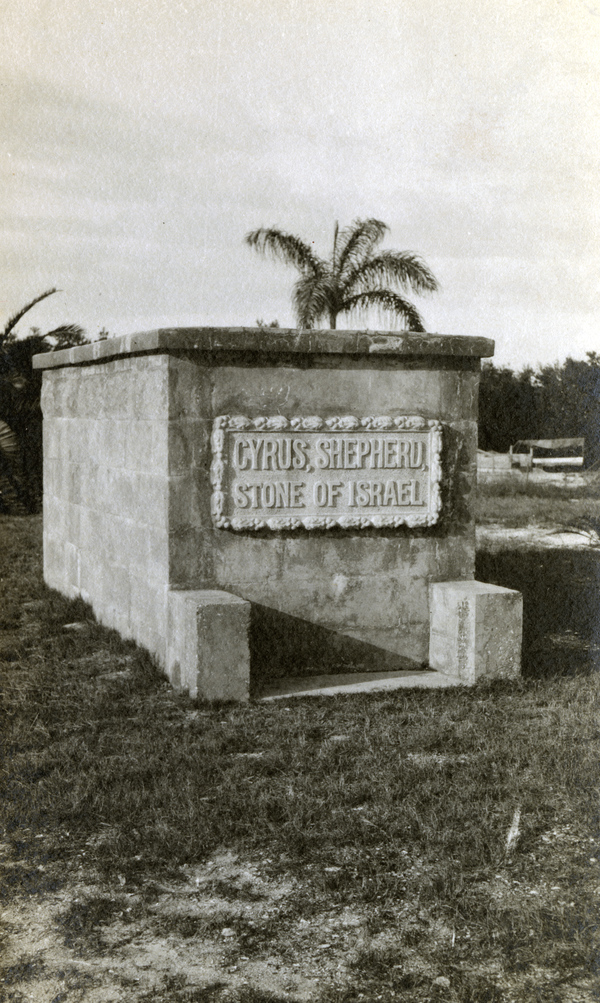
The storm hit with such force that much of the coastal topography was altered forever. In Lee County, the storm was responsible for carving out Redfish Pass, which connected the Gulf of Mexico to Pine Island Sound. Another island swept away by the storm surge was Passage Key, a little north of Redfish Pass. This 60 acre island was designated as a wildlife sanctuary by President Roosevelt in 1905. This key once housed lush vegetation, a spring-fed freshwater lake, and over 102 species of sea birds. Today, Passage Key is little more than a sandbar that is submerged most of the year.
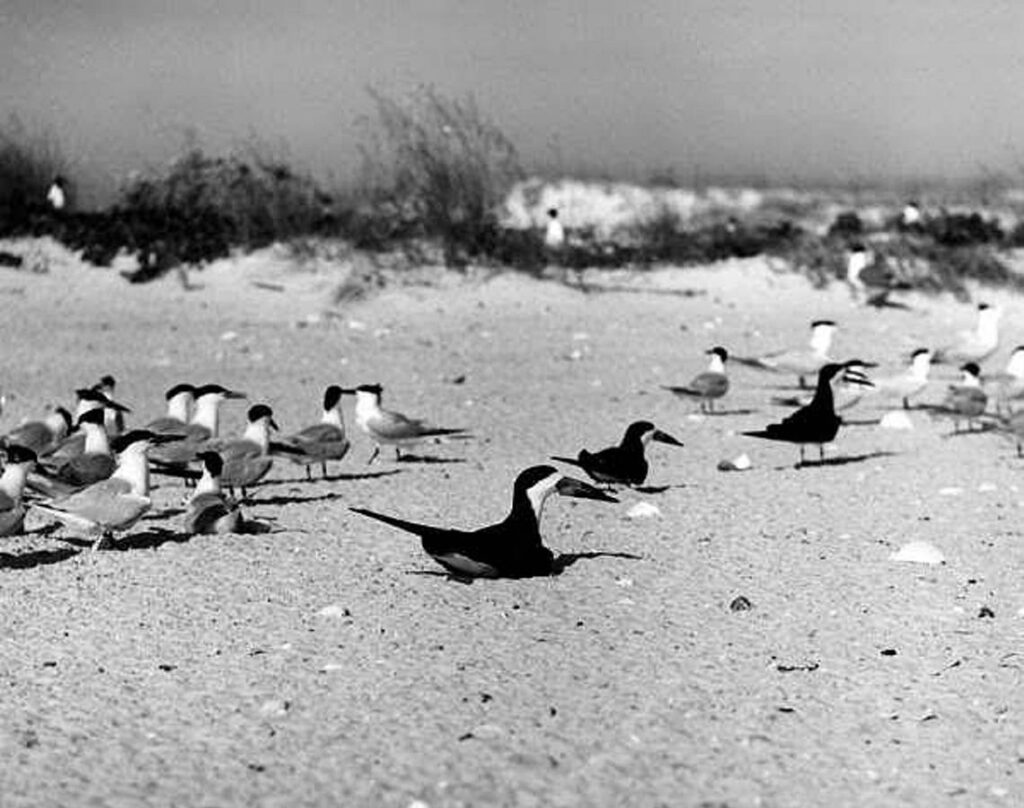
The few structures on the island at that time suffered damages. The Seminole Sands Casino and bath house were ruined along with several cottages. The road leading to the island from Bunch Beach was washed away. The hurricane can be best remembered because it washed away the tomb of Koresh (Cyrus Teed). After the storm had abated, the tomb was gone. However, by January of 1922, most of the storm damage had been repaired along with the road and the bridge.
After the hurricane, the beach development continued unabated. Phone service finally came to the area in 1922 with a pay station installed near the home of the bridge tender. It cost 25 cents to make a call to Fort Myers. A little later, a second phone was installed in the Seminole Sands Casino. By May of 1923, Thomas Philips had rebuilt his dance pavilion and bath house. By June, the road from McGregor to the beach was under construction.
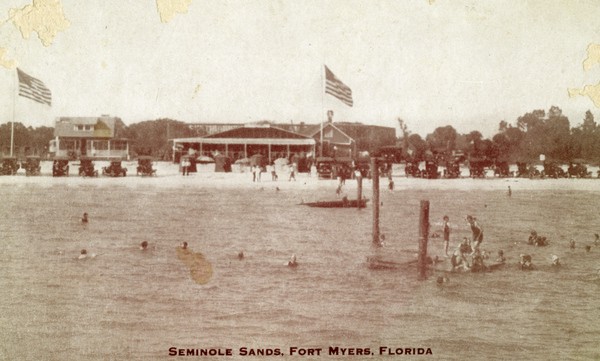
Gulf Heights Subdivision, Watson’s Subdivision, Venetian Gardens, and Gulf View Plaza were all developed after the storm. Two more canals were created called Canal Grande and Rio Del Lido. By 1923, the island had finally recovered from the 1921 storm. Unfortunately, another storm was to hit three years later in 1926.